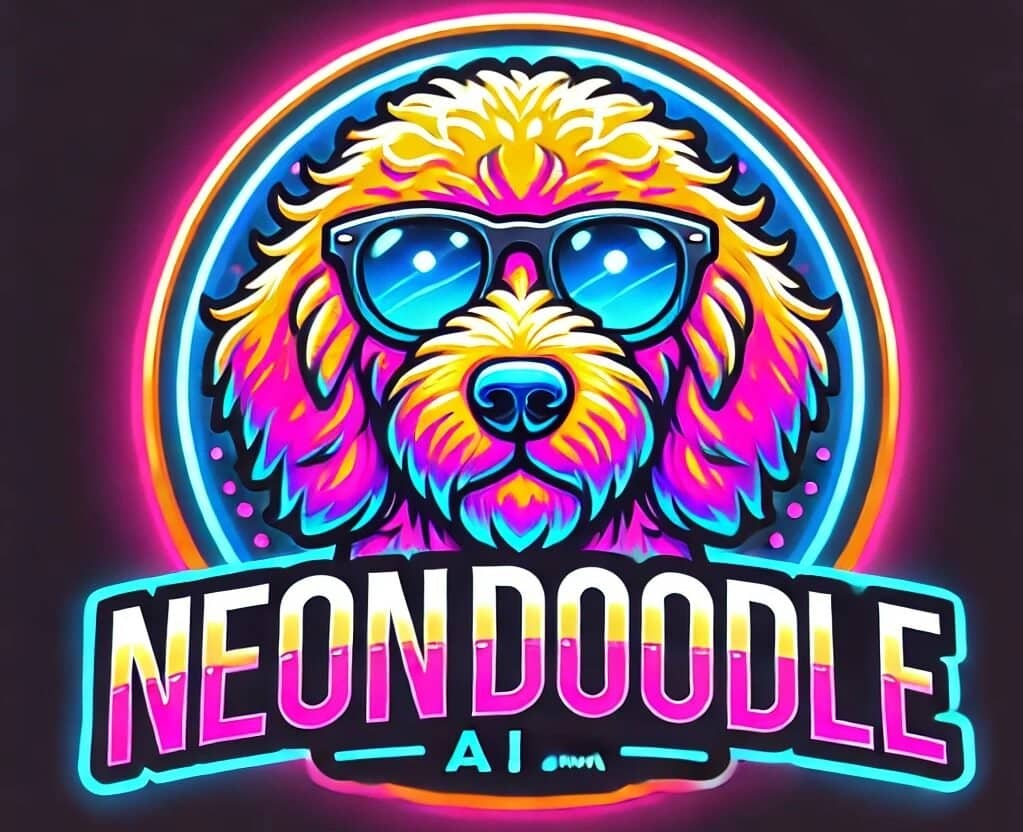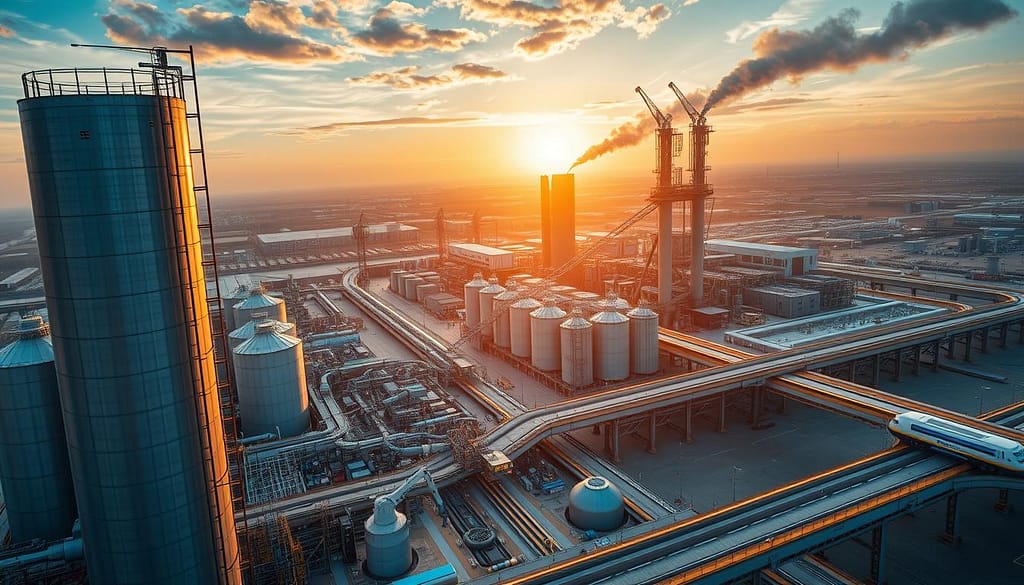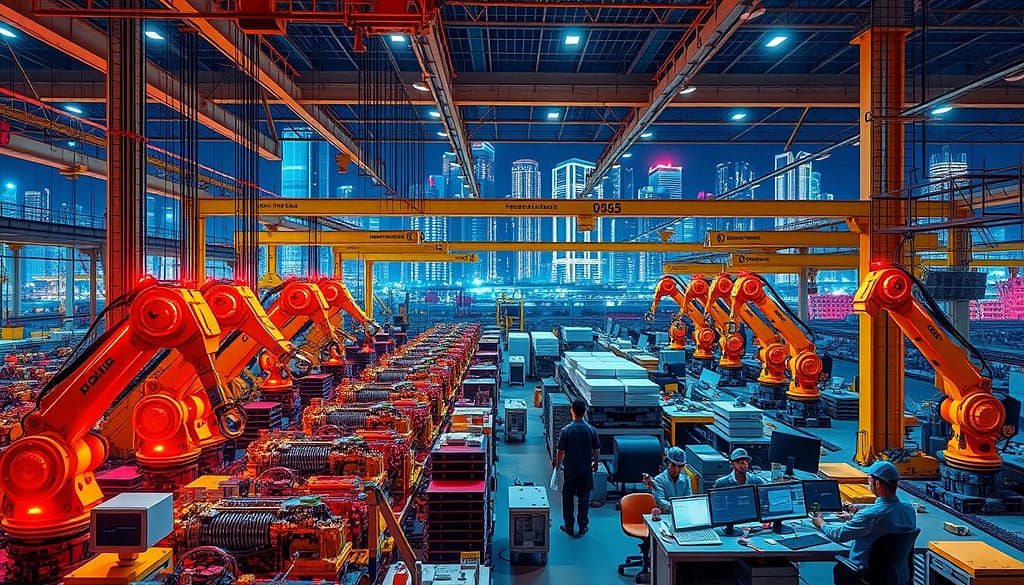Imagine a factory that operates 24/7 without any human intervention. Welcome to the era of “dark factories”—fully automated, AI-driven manufacturing facilities that are transforming industries worldwide. China is at the forefront of this revolution, with companies like Xiaomi leading the charge.
Take Xiaomi’s Changping factory as a prime example. This state-of-the-art facility produces one smartphone every second, showcasing unprecedented efficiency. The elimination of human error is a significant advantage, but it also raises concerns about traditional employment roles.
These advancements are not just about speed; they represent a fundamental shift in how goods are produced. AI and robotics are integrating into production models, driving innovation and reshaping investment patterns. As industries adapt, global trade balances are being influenced in unprecedented ways.
However, this transformation isn’t without challenges. Countries are struggling to balance economic growth with new regulatory frameworks. The integration of AI in manufacturing is a double-edged sword, offering immense benefits while posing significant societal questions.
Key Takeaways
- AI-powered factories, known as “dark factories,” are revolutionizing global manufacturing.
- China leads in adopting AI-driven manufacturing, with companies like Xiaomi at the forefront.
- Xiaomi’s Changping factory exemplifies efficiency, producing one smartphone every second.
- While AI eliminates human error, it raises concerns about job displacement.
- Global industries and investments are being reshaped by these technological advancements.
- Regulatory challenges arise as countries balance growth with ethical considerations.
Dark Factories: The Emerging Manufacturing Revolution in China
Step into a world where production lines hum 24/7, guided by artificial intelligence and robotics. These “dark factories” are redefining manufacturing, operating without human intervention. At the heart of this revolution is Xiaomi’s Changping factory, a marvel of modern tech that produces a smartphone every second.
This facility exemplifies how AI integration slashes human error and turbocharges production speed. Investors and industry reports highlight the remarkable efficiency of these operations, with systems designed for continuous production and minimal downtime.
The rise of dark factories is reshaping global trade dynamics. They’re not just about speed; they’re about building a competitive edge through time-efficient production. These advancements are setting new benchmarks, influencing manufacturing practices worldwide.
Warning: China’s AI-Powered Factories Are Reshaping the Global Economy!
The rise of AI-driven manufacturing in China is sounding the alarm for global economic structures. These advanced factories are becoming powerful tools for technological and production efficiency, significantly impacting various sectors worldwide. By integrating intelligence and automation, they’re setting new benchmarks for manufacturing processes.
Continuous automation is at the heart of this transformation. Factories now operate with minimal human oversight, driving efficiency and reducing errors. This shift isn’t just about speed; it’s about building a competitive edge that influences global trade dynamics. Over the past few years, the manufacturing landscape has seen dramatic changes, with China leading the charge.
The balance between technological advancement and control is a growing concern. As automation becomes more prevalent, maintaining control over these complex systems is crucial. Countries and industries worldwide are feeling the impact, adapting their strategies to stay competitive. Intelligence plays a key role in ensuring these systems operate safely and effectively.
| Country | Manufacturing Growth | AI Adoption Rate |
|---|---|---|
| China | 30% by 2025 | 70% by 2025 |
| United States | 20% by 2030 | 50% by 2030 |
| Germany | 15% by 2027 | 60% by 2028 |
These advancements are reshaping investment patterns and influencing economic policies. The integration of AI in manufacturing is a double-edged sword, offering benefits like increased productivity but also raising concerns about job displacement and economic inequality. As the world adapts to these changes, the focus remains on harnessing the power of automation while ensuring sustainable growth.
Global Regulatory and Economic Concerns
The rapid rise of AI-powered manufacturing has sparked significant regulatory and economic concerns worldwide. Chinese companies are at the forefront of this technological advancement, influencing international trade policies and tariffs. Governments are struggling to balance the benefits of AI-driven efficiency with the potential risks to employment and market stability.
The EU’s AI Act and U.S. bans on certain Chinese AI apps, like DeepSeek, highlight the regulatory challenges. These measures aim to manage risks while fostering innovation. However, compliance issues are delaying the launch of AI products in Europe, affecting businesses and stock markets.
Stock markets are feeling the impact as investors weigh the benefits of AI against potential disruptions. Businesses are adapting by investing in AI-driven solutions, with companies like Amazon and Walmart partnering with AI-focused firms. This shift is reshaping service sectors and creating new opportunities.
Governments face significant effort to safely integrate AI into existing systems. The balance between technological advancement and regulatory oversight is crucial. As Chinese companies continue to lead in AI, global economies must adapt to maintain stability and competitiveness in an ever-evolving landscape.
Conclusion
In conclusion, the rise of AI-driven manufacturing, particularly in China, is a transformative force in the global economy. These advancements bring significant benefits, such as enhanced efficiency and productivity, but also pose challenges like job displacement and regulatory complexities. As industries evolve, strategic planning and policies are essential to navigate this new landscape.
Research indicates that AI could add $15.7 trillion to the global economy by 2030. However, balancing progress with ethical considerations is crucial. Governments and businesses must collaborate to develop frameworks that support innovation while safeguarding employment and stability. The integration of AI into manufacturing is not just about technology; it’s about creating a sustainable future for all.
Looking ahead, the focus should be on harnessing AI’s potential responsibly. By investing in research and developing robust policies, we can ensure that technological advancements benefit both economies and societies. The journey ahead requires careful planning to navigate the opportunities and risks AI presents.




